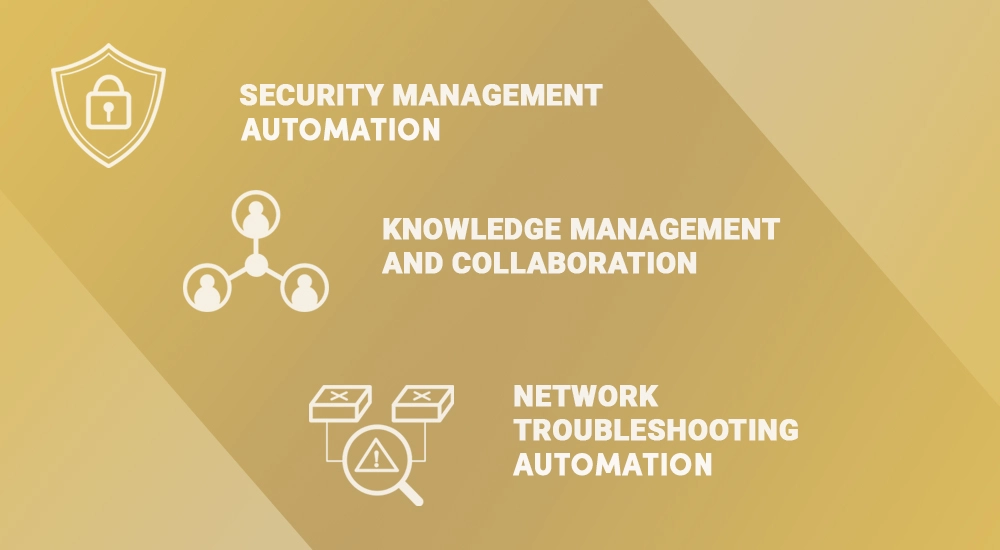Network management and operations in the pharmaceutical industry become increasingly difficult as more and more network management tools are introduced. That’s because, for decades, network management has been handled as a one-off bespoke and brute force function… each engineer solves problems individually and uniquely, and they focus on the health of the devices, not the delivery of services.
For Scott, a Network Engineer Lead at a large pharmaceutical company in the Midwest, making the transition to NetBrain allows him to take an entirely different and more streamlined approach to keep his organization running. The difference is he can now leverage his previous experience and that of his SME peers, based on a real-time view of the network, and one focused on delivering and verifying IT services rather than more primitive device health. With NetBrain, he now has the ability to capture and execute previous experience and use it at scale across his entire infrastructure.
And good thing he adopted NetBrain. Scott’s team manages a network of more than 5,000 routers and 10,000 access points, and network engineers within his organization now leverage NetBrain for everything from network troubleshooting and scaling knowledge and collaboration to preventing problems before they impact the business.
From our discussions with Scott, here are the four critical areas where NetBrain has helped make life easier for him and his team but more importantly enabled his organization to dramatically reduce overhead costs in NetOps and reduce the business risk for his digital-centric company:
For Scott and his team, reducing troubleshooting time was a key factor in choosing to implement NetBrain. In the past, they often relied on MS Visio or other manual tools for network diagramming. Network troubleshooting is always based on a concise understanding of connectivity, performance, and boundary conditions, so when working on problems, documentation is essential. The problem for Scott and his team (like most others) is that manually created documentation is out of date within days. NetBrain enabled him to have an instant understanding of the operation of the network with the push of a button. In fact, NetBrain is providing his team with the automated creation of documentation and initial diagnostics any time an issue is detected, and prior to their staff engineers getting involved.

“To manually draw out a network map takes at least a couple of hours and requires multiple resources to interpret the various topology components, where NetBrain can do it in minutes and provides a wealth of real-time detail not even possible with drawing tools. It’s a huge time savings, and allows our engineers to hit the ground running,” said Evers. In addition to gaining clear end-to-end visibility in minutes, Scott is seeing significant benefits from being able to detect anomalies prior to trouble reports. By comparing known working conditions with the real-time status of the network, issues that arise are being addressed by his team long before they would impact the business. This has been particularly helpful in speeding up the troubleshooting process for certain application-centric issues. “With NetBrain archiving a known good configuration regularly, it allows us to go back and look at what changed when there is an issue. It helps us solve ‘mystery’ issues all the time,” he said.
Visually troubleshooting from point A to point B is another critical new function for Scott and the team. He cited the ability to plug in two IP addresses and quickly see what’s in between as a major value-add, particularly when they previously performed this by mapping out by hand in MS Visio. But NetBrain also shows his team how traffic is flowing bi-directionally and the expected behaviors of the network in terms of raw connectivity, performance, and security.
Managing security compliance and policies in an enterprise organization is a tough task and is usually relegated to the individual security products’ own status screens and reporting. As with many other sensitive or regulated industries, it’s critical for Scott and his team to know for sure that patient data is secured- not just that they bought the right kind of firewall or set up ACLs properly. NetBrain enables his team to verify that boundary and other security configurations are in place and operating as expected. With NetBrain, the assuring that the organization’s network has been secured properly is now a matter of fact and can be defended through continuous testing.

“NetBrain looks for conditions that don’t meet certain design or security configurations and we can do searches within our change management workflows to identify how various components have fallen out of compliance. Netbrain allows us to continuously test our security footprint against what we expect,” said Scott. The ability to automate configuration compliance in the context of service delivery rather than pure device health has made their network more secure and requires less time to manage.
With more than 30 people in their network operations center and two-thirds of the IT staff in the company for less than two years, a majority of his team does not have much institutional knowledge of network history in the house. Ensuring that network knowledge and best practices are captured and turned into executable processes and then shared consistently is a core value of NetBrain.
“NetBrain is one of the first tools our new hires get introduced to, as they will be using it every day on the job,” he added. Through NetBrain, the team can easily share network information and ensure that every network engineer is up to speed and powered by the work of their peers and predecessors. The DCops, SECops, and even DEVop teams also use NetBrain to gain insights into service delivery, allowing more visibility and fewer escalations between teams.
Prior to NetBrain, Scott and the team leveraged different tools for mapping, configuration, and diagramming and all of their effort was in response to trouble reports. Everything they did was brute force tactics. In what Scott described as a “simple” implementation process, NetBrain eliminated the need for a litany of other network tools, consolidating all that work through NetBrain.
“At this point, we are able to do almost everything we need through NetBrain including visual troubleshooting, configuration backups, configuration management, and inventory management,” said Scott. “It’s been a great value in that way,”
It was a pleasure to chat with Scott, particularly learning about their workflows and how NetBrain helps. He exudes deep knowledge and understanding about enterprise networking and I’m extremely grateful that he could take some time out to chat with us.

